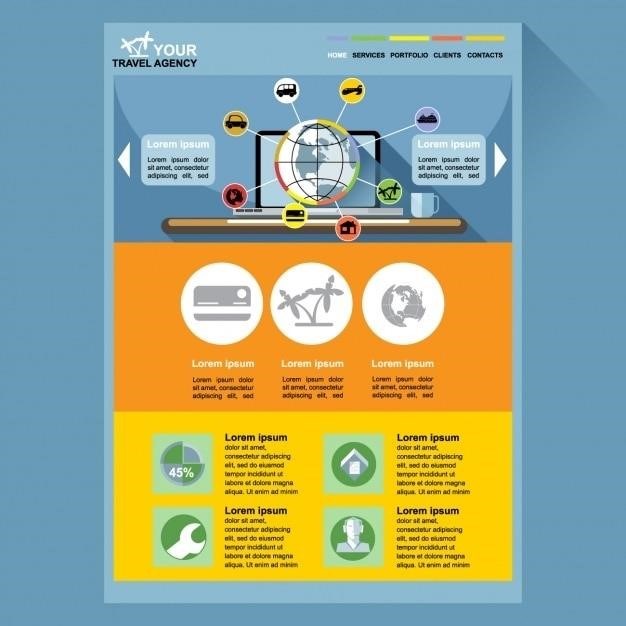A.A. Service Manual⁚ An Overview
The A.A. Service Manual, a comprehensive guide to Alcoholics Anonymous’s service structure, originated from Bill W.’s 1951 draft, evolving from the Third Legacy Manual. It details the principles and procedures of AA’s service, revised and reorganized for clarity and completeness by the General Service Conference. This essential resource covers AA’s history, the Conference’s structure, and the roles of various service bodies ensuring the continued effectiveness of the fellowship;
History and Origins
The A.A. Service Manual’s history is deeply intertwined with the evolution of Alcoholics Anonymous itself. Its roots trace back to Bill W.’s initial draft in 1951, a foundational document that laid the groundwork for the organization’s service structure. This early manuscript, known as the Third Legacy Manual, served the burgeoning movement effectively for many years, providing essential guidance and principles for AA’s operational framework. Over time, the need for updates and refinements became apparent, leading to revisions and restructuring to enhance its accessibility and comprehensiveness. The current manual retains the core principles of Bill W.’s original vision, reflecting the enduring values of service and mutual support that underpin the AA fellowship. The General Service Conference, the governing body of AA World Services, plays a crucial role in overseeing these revisions, ensuring the manual remains a relevant and accurate reflection of AA’s operational structure and guiding principles. The ongoing evolution of the manual reflects AA’s commitment to adapting to changing needs while preserving its core mission.
Structure and Purpose of the Manual
The A.A. Service Manual is structured to provide a clear and comprehensive guide to the functioning of Alcoholics Anonymous’s world service organization. Its purpose is multifaceted⁚ to explain the history and development of AA’s service structure, to detail the roles and responsibilities of various service bodies, and to outline the principles and procedures that govern AA’s operations. The manual serves as a vital resource for members involved in service, offering guidance on how to effectively support the fellowship’s growth and sustainability. It clarifies the relationships between different levels of service, from local groups to the international General Service Conference. Furthermore, the manual emphasizes the importance of maintaining AA’s traditions and principles while adapting to evolving circumstances. By providing a framework for effective service, the manual aims to promote unity, efficiency, and consistency within the diverse global network of AA groups. Its clear articulation of roles and responsibilities ensures that AA’s service efforts are aligned with its core mission of helping alcoholics achieve and maintain sobriety.

The General Service Conference
The General Service Conference (GSC) is the primary governing body of Alcoholics Anonymous World Services (AAWS), responsible for overseeing the organization’s overall functioning and ensuring adherence to AA’s traditions and principles. It’s a democratic body representing the collective will of AA groups worldwide.
Role of the GSRs, DCMs, and Delegates
Group Representatives (GSRs) serve as vital links between their local AA groups and the larger AA community. They attend regional and area meetings, conveying group concerns and decisions to higher levels of service. District Committees of Members (DCMs) are intermediate bodies, often comprising several groups, responsible for coordinating activities and resources within their respective districts. They provide support to groups and GSRs, ensuring effective communication and collaboration. Delegates, elected by groups or DCMs, represent their constituencies at the General Service Conference (GSC), the highest decision-making body in AA’s world service structure. These delegates carry the voice of their groups to the GSC, participating in policy decisions and ensuring the continued health and effectiveness of the fellowship. The roles of GSRs, DCMs, and delegates are integral to the democratic and participatory nature of AA’s governance, ensuring that the organization remains responsive to the needs and preferences of its members worldwide. Their combined efforts ensure a strong and unified voice for the fellowship, promoting collaboration and continuity across diverse regions and groups.
Functions of the GSO and Grapevine
The Alcoholics Anonymous World Services, Inc. (GSO) serves as the central coordinating body for AA’s world service, managing the organization’s finances and resources. It doesn’t dictate policy but provides essential services that support AA groups worldwide, including literature production and distribution, and maintaining a network of communication. The GSO’s role is strictly service-oriented, ensuring the smooth functioning of AA’s operations, without interfering in the autonomy of individual groups or areas. The Grapevine, AA’s monthly magazine, plays a crucial role in disseminating information and fostering fellowship among members. It features articles on recovery, service experiences, and announcements of AA events, providing a vital communication channel across the global AA community. Both the GSO and Grapevine work independently but collaboratively to support the overall mission of Alcoholics Anonymous – to carry the message of recovery to those who still suffer from alcoholism. They are integral to the effective functioning of the fellowship, supporting the unity and growth of AA worldwide.
Twelve Concepts for World Service
Bill W.’s Twelve Concepts, integral to the A.A. Service Manual, guide AA’s world service structure. These principles, born from experience and reflection, ensure responsible growth and unity within the fellowship, emphasizing service and spiritual principles.
Bill W.’s Contribution and Significance
Bill Wilson, co-founder of Alcoholics Anonymous, played a pivotal role in shaping the organization’s service structure. His profound insights and experiences laid the foundation for the Twelve Concepts of World Service, a cornerstone of the A.A. Service Manual. These concepts, born from his own journey of recovery and his deep understanding of the fellowship’s needs, provide a framework for responsible growth and effective service. Bill W.’s contribution extends beyond the creation of these principles; his tireless dedication to carrying the message of recovery to others, and his commitment to ensuring the long-term sustainability of AA, profoundly influenced the organization’s development. He recognized the importance of a structured approach to service to ensure its effectiveness and longevity, a vision reflected in the enduring relevance of the Twelve Concepts. His leadership and wisdom continue to guide AA’s efforts to help alcoholics worldwide find sobriety and lasting recovery;
Principles of Service and Their Application
The A.A. Service Manual emphasizes key principles guiding service within the fellowship. These principles, deeply rooted in the Twelve Steps and Twelve Traditions, promote unity, cooperation, and selfless action. They stress the importance of carrying the message of recovery to other alcoholics, emphasizing the power of shared experience, strength, and hope. Effective service, according to the manual, relies on humility, respecting the autonomy of groups and individuals, and avoiding any form of control or coercion. The application of these principles ensures that service remains focused on the primary purpose of helping alcoholics achieve sobriety. It involves actively participating in group activities, providing support to fellow members, and contributing to the overall well-being of the fellowship. The manual encourages understanding and applying these principles to maintain the integrity and effectiveness of AA’s service structure, ensuring its continued success in helping alcoholics find recovery.

AA’s Service Structure
The A.A. Service Manual thoroughly details Alcoholics Anonymous’s hierarchical service structure, from local groups to the worldwide General Service Conference, outlining the roles and responsibilities of each level to maintain effective service.
Conference Structure and Year-Round Importance
The A.A; Service Manual emphasizes the crucial role of the General Service Conference (GSC) in Alcoholics Anonymous’s worldwide operation. The GSC, a representative body of AA groups, isn’t merely an annual gathering; its influence extends year-round. The manual meticulously explains the GSC’s structure, illustrating how groups elect delegates who, in turn, select trusted members to serve on the General Service Board (GSB). This board oversees the World Service Office (WSO), responsible for managing AA’s resources and communications; The year-round importance stems from the GSB’s continuous work in upholding AA’s traditions, policies, and financial stability. Detailed descriptions of the processes involved in electing representatives and the specific responsibilities of the GSB and WSO are included to ensure transparency and accountability. The manual highlights how this structure facilitates a collaborative approach to decision-making, ensuring that AA’s global operation reflects the needs and perspectives of its diverse membership.
The Roles of Directors and Trustees
The A.A. Service Manual provides a clear delineation of the roles and responsibilities of directors and trustees within the Alcoholics Anonymous World Service structure. Directors, appointed by the General Service Board (GSB), manage the day-to-day operations of the World Service Office (WSO), ensuring the efficient allocation of resources and the smooth functioning of AA’s administrative aspects. Their duties encompass overseeing various departments, managing finances, and implementing GSB decisions. The manual emphasizes that these directors act as stewards, accountable to the GSB and ultimately to the entire AA fellowship. Trustees, also selected by the GSB, provide oversight and guidance on a strategic level. They ensure the long-term financial health and stability of the organization, safeguarding AA’s assets and ensuring adherence to its principles. The manual highlights the importance of the trustees’ independent judgment and their role in maintaining the integrity and autonomy of AA’s service structure. The distinction between the operational responsibilities of directors and the strategic oversight of trustees is crucial to AA’s governance model, as detailed in the manual.